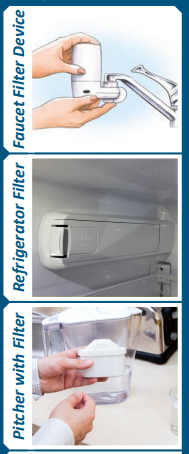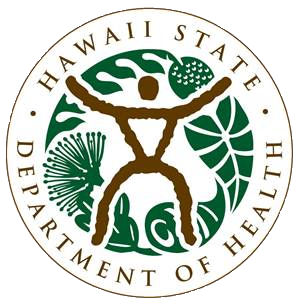WIIN – Corrective Action
CORRECTIVE ACTION – What to do if lead is found in the drinking water at my facility
Hawaii WIIN Project – Testing Drinking Water for Lead at Schools and Child Care Facilities
WHAT HAPPENS IF LEAD IS DETECTED IN THE WATER ABOVE THE ACTION LEVEL OF 15 PARTS PER BILLION (PPB)?
If lead is detected in a drinking water sample taken from your facility, you will be contacted and asked to block off access to that tap. It is important that people do not drink water from that tap. This may require an alternative drinking water source, like using a tap that did not test high or temporarily using bottled water for drinking and cooking.
You will be contacted about a date for confirmatory water sampling. At this confirmatory sampling visit, two samples will be taken, one from the first supply of water to come out of the tap after resting for 8-18 hours (first draw) and one after the water has run for 30 seconds (flushed sample). These samples can help determine if the lead contamination is coming from the faucet or pipes.
IMMEDIATE TIPS TO REDUCE LEAD EXPOSURE FROM DRINKING WATER
Recommended for results of 2.5 ppb to <15 ppb
- Use only cold water (filtered is best) from the tap to drink, cook and mix baby formula. Hot water from your water heater may increase the amount of lead transferred from the pipes or faucet. Remember, boiling your water does not remove lead.
- Clean faucet screens and aerators regularly to remove captured debris, including lead. Watch a brief video showing how to clean aerators.
- Flush the water from the tap for 2 minutes every morning.
REMEDIATION OPTIONS FOR ELEVATED LEAD LEVELS
- CONVERT sink into a “Hand-Wash Only” station and use an alternative water source for drinking, such as a different tap or filtered or bottled water. Make sure to post signs that clearly remind people not to drink the water and label the tap as “Hand-Wash Only.” Sign templates can be found here: Hand-wash Only and Do Not Drink Sign Templates

- FILTER drinking water with certified filters, which can be very effective at removing lead. These filters come in different styles:
- Pitcher Filters
- Faucet Mounted Filters
- Under-sink In-line Filters
- Refrigerator Filters
Filters must be certified by the National Sanitation Foundation (NSF) to remove lead and be maintained and replaced according to manufacturer instructions. Look for NSF 53, NSF 58 or NSF 62 certifications on the filter packaging. For more information, visit:
- NSF: Lead in Drinking Water and Certified Product Listings for Lead Reduction
- EPA: Filters for Lead in Drinking Water Factsheet
- Consumer Reports: How to Make Sure Your Water Filter Really Removes Lead
- REPLACE the faucet or fixture, which may eliminate the source of lead. Make sure replacement fixtures are certified to be “lead-fr
 ee.” If confirmatory sampling indicated the source of lead is in the pipes, replacement of plumbing pipes is an option but will likely be costly.
ee.” If confirmatory sampling indicated the source of lead is in the pipes, replacement of plumbing pipes is an option but will likely be costly.
IS THERE FUNDING TO HELP PAY FOR FIXTURE OR PLUMBING REPAIRS?
The WIIN Project funding sources do not provide money to help pay for remediation. There are some available resources that may provide low-cost loans or grants to help with fixing the plumbing at your facility.
- Green and Healthy Homes Initiative Lead Funding Toolkit
- Harry and Jeanette Weinberg Foundation
- City & County of Honolulu Department of Community Services Loan Programs for Homeowners
- Hawaii County Residential Repair Program or call 808-959-4642
MORE HELPFUL LINKS:
- Department of Health: Lead in Drinking Water – Corrective Action Factsheet
- US EPA: Basic Information About Lead in Drinking Water
- Center for Disease Control and Prevention (CDC): “Lead in Drinking Water”
- Clean Water Action: “Lead and Drinking Water”
- Save Our Water: “The Best Water Filters for Lead Removal for 2021”
- Bob Vila: “How to Know if You’re Dealing with Lead Pipes – and What to Do About Them”
